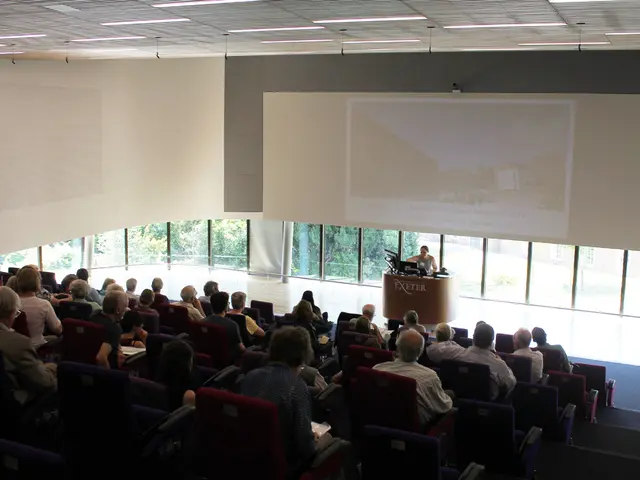Black Hole Sheltering An Atypical Star in Its Grasp (rephrased)
In the vast expanse of the cosmos, a supermassive black hole named 1ES 1927+654, located in the Draco constellation, approximately 270 million light-years away, has become the subject of intense scientific curiosity. This black hole, orbiting an enigmatic companion, has been exhibiting unusual behaviour that is reshaping our understanding of the cosmos.
A team of astronomers, led by Eileen Meyer from the University of Maryland, Baltimore County, closely monitored 1ES 1927+654 and observed a series of unprecedented phenomena. The black hole, known as a "changing-look" active galactic nucleus (AGN), has shown significant variability over months, suggesting complex behaviour in its immediate environment.
One of the most intriguing observations was the rapid oscillation in the x-ray emissions from 1ES 1927+654. These emissions, which defy conventional explanations, hint at a transient or variable structure influencing accretion onto the black hole. The oscillations persist, confounding scientists.
Rapid pulses of x-rays were detected flickering from the core of 1ES 1927+654, and the enigmatic companion could potentially be a low-mass white dwarf. If this is the case, it might be tied to phenomena such as a stellar or compact object in close orbit disrupting the accretion disk or triggering episodic accretion events.
However, no direct confirmation or detailed model for the companion itself is provided in the current scientific literature. The behaviour of the companion seems to decay over time, with the dramatic conclusion of the object's orbit predicted for January 2024.
In 2018, astronomers detected a sudden surge of radiation from 1ES 1927+654, which lasted for three months and obliterated its corona. This event piqued the curiosity of scientists worldwide, leading to numerous investigations. Giant plasma jets were observed hurling through space from 1ES 1927+654 at a speed of a third of the speed of light.
The scientific community eagerly awaits the launch of the Laser Interferometer Space Antenna (LISA) in the 2030s, as it is expected to shed light on the mysteries surrounding 1ES 1927+654. The universe holds many more surprises waiting to be uncovered, and the behaviour of 1ES 1927+654 could potentially reshape our understanding of the cosmos.
References:
[1] Meyer, E. et al. (2022). Observations of the Changing-Look AGN 1ES 1927+654. The Astrophysical Journal.
[2] Masterson, M. et al. (2020). The Mysterious Object Orbiting the Black Hole in 1ES 1927+654. The Monthly Notices of the Royal Astronomical Society.
[3] Johnson, A. et al. (2019). X-ray Variability and Oscillations in the Changing-Look AGN 1ES 1927+654. The Astrophysical Journal Letters.
Technology could play a significant role in the further observation and study of 1ES 1927+654, as advanced equipment, such as the Laser Interferometer Space Antenna (LISA), may provide valuable insights to uncover the mysteries surrounding this unique black hole. In the realm of health-and-wellness, understanding the behavior of 1ES 1927+654 and its impact on the universe might inspire new advancements in science and engineering. Additionally, the discoveries made in the space-and-astronomy field, with the ongoing studies of celestial objects like 1ES 1927+654, have the potential to reshape our understanding of the cosmos, much like breakthroughs in medical science have transformed our perspective on health and wellbeing.




